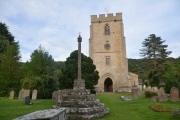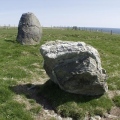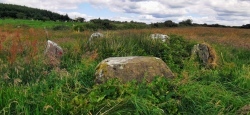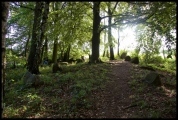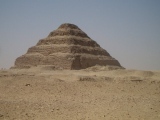Andy Burnham's Blog, page 166
July 22, 2021
Kilquane Holed Stone
A Holed Stone in Co. Cork, known locally as Cloch na Peacaib (the sinner's stone); according to Windele, writing in 1848, "women, nearing their confinement, used to draw clothes through the hole in order to ensure a favourable delivery". Ref: (Logan 1980, 106). In pasture, at base of a south-facing slope, on north side of road, directly opposite ruin of Kilquane church. A slab (1.9m x 0.7m x 0.3m) with a smooth hole diameter 100mm drilled through it.
Published on July 22, 2021 11:38
Yongsan-ri Dolmen
A dolmen located in Yongsan-ri, Buan-myeon, Gochang-gun, South Korea. It is located in front of the pavilion at the west entrance of Yongsan Village. During the Japanese colonial era, others tried to move dolmens to build roads. But the villagers were strongly opposed to moving it. This is because the location of the rock was good for the theory of divination based on topography. Thanks to this, dolmens were preserved.
Published on July 22, 2021 07:47
July 21, 2021
Hørret Skov Megalitgrav
A dolmen. 1,2 x 13m. The remains of a chamber with 2 or 3 uprights. What looks like a capstone lies to the south, and there are two or more kerbstones.
Published on July 21, 2021 11:16
St John the Baptist and St Alkmund (Aymestrey)
The Historic England describes this site as "the remains of a standing stone cross" - not made from a standing stone, but a cross which is still standing!. The site includes a base of five steps and a socket stone, a shaft, a knop and a decorated finial with an iron pinnacle top
Published on July 21, 2021 11:15
Clach Stein
These two standing stones, the most northerly on the Isle of Lewis are 1.5m (5 feet) and 0.9m (3 feet) tall. They may be the remains of a four-poster (rectangle) which would have had a diameter of 3m (10 feet).
Published on July 21, 2021 11:03
July 20, 2021
Knockraheen Stone Circle
A stone circle of 5 stones pointing to the south, with the remains of an alignment - 2 quartz stones still standing and a third prostate - on the same axis. 1.6km (1mlles) NNW of The Bealick, a short distance to the north of a narrow byroad from Carriganimmy to Macroom.
Published on July 20, 2021 10:13
July 19, 2021
Everstorfer Forst Nord (1)
If your obsession is stone hunting, then visiting the Everstorfer Forst in Mecklenburg is like a visit to Disneyland for a child. At the northern location alone are 8 very different tombs in a row! This is number 1 of the row of 8 tombs - a damaged chambered long barrow in the north-eastern corner of the forest.
Published on July 19, 2021 09:40
July 18, 2021
Dalcross Mains
This cairn with outer stone circle lies between two fields overlooking the Moray Firth. The area around has been ploughed and quarried, while the site itself is rather overgrown with birch trees. Despite this the cairn has survived relatively well with the outer kerb stones being almost complete. Unfortunately the same cannot be said of the surrounding stone circle, only two stones of which remain to the south.
Published on July 18, 2021 04:38
July 16, 2021
Bedd Arthur
This so-called stone circle lies overlooking the Bluestones outcrop of Carn Meini, Pembrokeshire. It is actually oval or horse-shoe shaped leading to speculation that it may have been this site which influenced the original horseshoe of Bluestones at Stonehenge.
Published on July 16, 2021 01:33
July 15, 2021
Sakkara Pyramid
The Smithsonian presents a special feature: Inside the Tombs of Saqqara - more in the comments on our page . The world's first large stone structure built under Pharaoh Djoser founder of the 3rd Dynasty of the Old Kingdom. Under the Architect Imhotep, the original small mastaba was expanded in all directions to a height of 62 metres, a length of 123 metres and a width of 107 metres. The stone blocks are much smaller than those of the later pyramids.
Published on July 15, 2021 13:25




